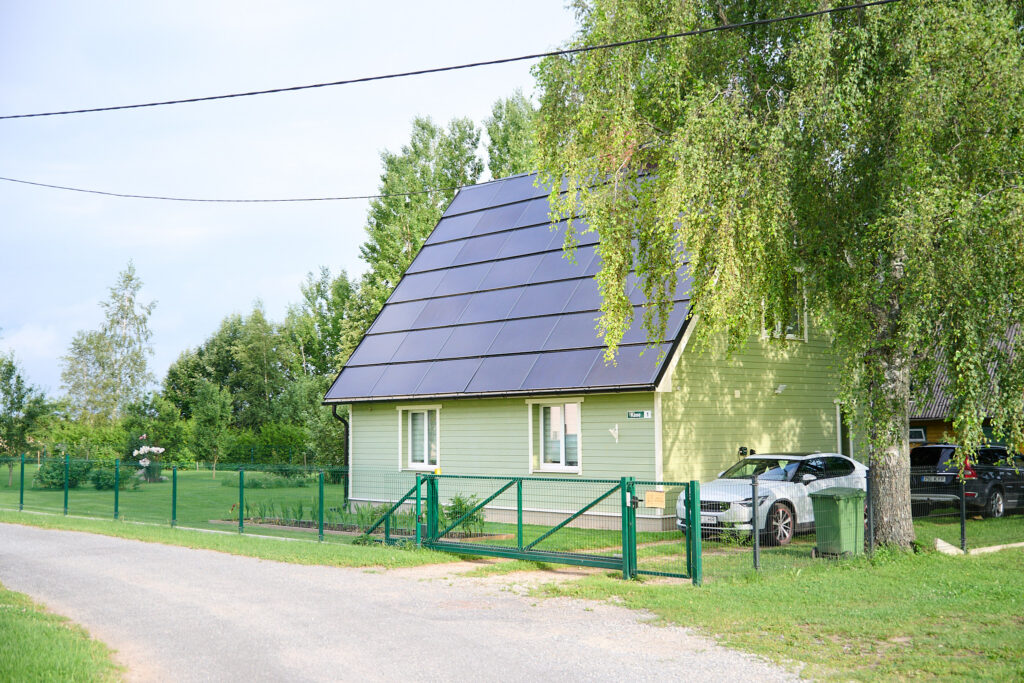Autumn is here again and has brought the question of whether the electricity prices are expected to rise. While colder weather generally means higher consumption and more expensive prices, predicting the actual is difficult. It is therefore good to know what preventive measures can help to keep costs down, even if electricity prices were to rise.
With a fixed package, high electricity prices are a thing of the past
Fixing electricity prices is one of the easiest ways to ensure peace of mind and price stability for the whole autumn/winter period or even longer. When you sign a fixed price contract, the unit price of electricity will stay the same for the agreed period. So there’s no need to worry about what’s happening on the electricity market and you can plan your monthly budget more easily.
We particularly recommend that you choose a fixed package if you cannot schedule your consumption at a cheaper hourly rate, or if you have an electric heating at home. With Enefit, you can fix your electricity price for both short and long term. Find out more about our 6-, 12- and 36-month packages here.
Saving starts with reducing consumption
Keeping costs down is all about smart and sensible energy consumption, so the first thing you should do is look at your consumption habits. Especially if you’ve opted for an exchange package. Try thinking about the following questions:
- When do I use electricity the most?
- Is my consumption during the time when the price of electricity on the stock exchange is more expensive?
- At the expense of which activities can I increase electricity savings?
- How energy efficient are my home electrical appliances?
It’s a good idea to compare your electricity bills by month and by year – this way you can get an idea of whether and what you have done differently in one month or another and how this has affected your costs. If searching your mailbox for years’ worth of bills seems like a chore, another option is to get yourself our Enefit mobile app.
In the app, consumption information is available by the hour, week, month or year. This means that, for example, if you went to the sauna the night before, you can retrospectively estimate how much your household’s energy bill increased while the electric coil was running. You can also see hourly electricity prices in real time and up to a day in advance.
The biggest savings potential lies in heating
As heating is needed for nearly half the year in the Estonian climate, it also consumes the most energy. Every heating system has its pros and cons. For example, the initial investment required to install electric radiators and underfloor heating may be lower, but the fixed costs are significantly higher in winter due to higher electricity prices.
A good modern solution to protect against high heating costs is an air-to-air heat pump, which can reduce heating costs by 2-3 times compared to conventional electric radiators.
Unplug appliances that are currently not in use
We often tend to associate increased energy costs with overheated rooms or lights being left on for too long. The real “culprits” may be a third group of electricity consumers that you might not think of at first glance – electronic appliances that are plugged in 24 hours a day, such as washing machines and fridges, as well as phone chargers, toasters or kettles.
Even if these kind of devices are not in use at the time, they are still connected to the mains and can therefore account for up to 10% of the total electricity bill, as they consume electricity in standby mode. It is therefore wiser to temporarily disconnect equipment that is not in use. For older appliances such as the fridge or washing machine, it is worth considering replacing them with more energy efficient ones.
Less is more
You don’t have to wash your laundry in 40 or 60 degree water. For lightly soiled laundry a 30 degree cycle will do the trick. Also, the temperature of the floor and water heater does not need to be at maximum. For example, 55 degrees is sufficient for a boiler. This also reduces the formation of scale, which also affects the energy consumption of the boiler.
Reducing the room temperature alone by one degree Celsius reduces heating costs by an average of five percent.
If you would like more information or have any other questions, we are happy to help. To do so, contact us by emailing teenindus@enefit.ee, call 777 4040 or leave a request for a consultation on our website.



